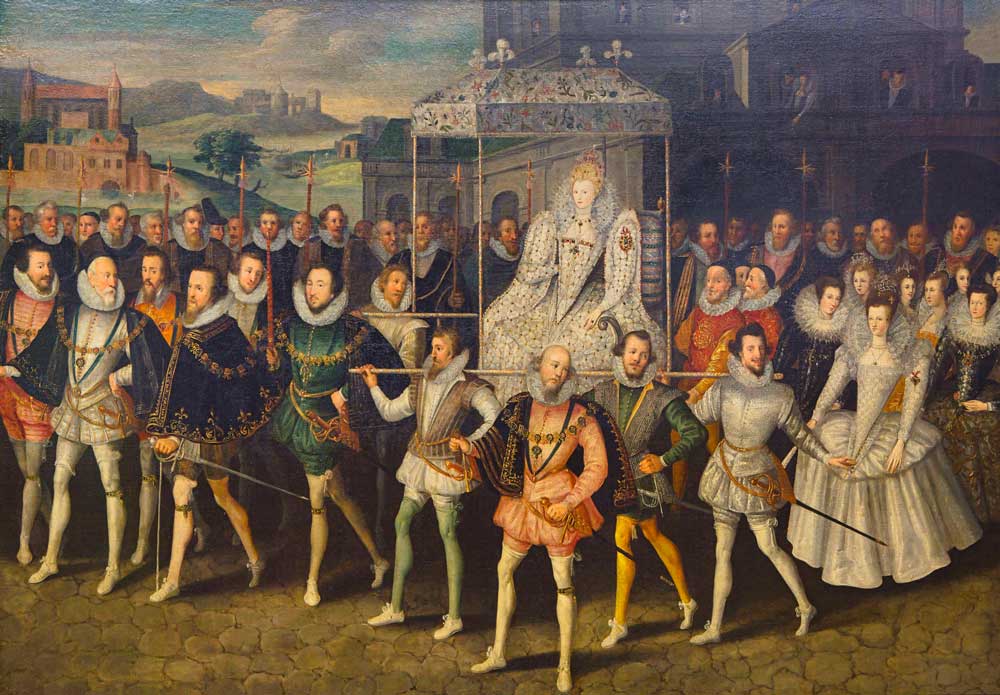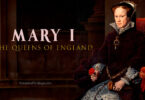When one speaks of the kings and queens of England over the centuries, one name is more universally known and admired than any of the others. That name is Elizabeth Tudor, aka Queen Elizabeth I. Only her father, Henry VIII, may have more name recognition, but he does not have the admiration of Elizabeth. While the recently crossed-over Queen Elizabeth II may ultimately have more historical recognition because of her record-breaking length of reign, her reign is still too recent to assign her to the halls of history to which Elizabeth I has belonged for centuries. Often spoken of in glowing terms as having presided over England’s “Golden Age,” this is what you need to know about England’s famous “Virgin Queen.”
Born in 1533 to England’s King Henry VIII and his second wife, Anne Boleyn, Elizabeth was not the legitimate son her father so intently desired. While her birth as a girl was a disappointment to him, Henry nonetheless treated her well, setting her up with her own household right after her birth, as befitted a princess. He even made his elder daughter, Mary Tudor (once titled a princess, but by then demoted to a mere lady due to Henry declaring his marriage to her mother, Katherine of Aragon, invalid) attend to Elizabeth as a servant in her new household, something the former princess keenly resented. Henry was also known to show off Elizabeth to his friends, courtiers, and visiting diplomats, bragging about her Tudor red hair and telling all who were forced to listen that her birth was proof that Anne was fertile and that boys would surely soon follow her birth.
Yet, despite this wonderful and storied beginning, Elizabeth’s life as a pampered princess did not last long. Frustrated with Anne’s seeming inability to produce a living son (she did have at least two, and possibly three miscarriages, one of which was definitively identified as a boy), Henry soon grew tired of his once great love and desired to discard her as he had done his previous wife. Anne was not so lucky as to get a divorce, though. Henry approved of trumped-up charges of adultery, incest, and treason that his courtiers brought against her (being aware of his desire to be rid of her and wanting to help him to gain his favor). Anne was found guilty because it was never going to be otherwise. The king got what the king wanted. Anne was executed when Elizabeth was only three years old.

The now motherless child was demoted to a lady, just as her elder half-sister had been. Henry declared his marriage to Anne invalid, claiming he had been coerced into it by witchcraft from Anne. This made Elizabeth illegitimate in the eyes of English law and thus ineligible for the throne or even the title of Princess.
Elizabeth was mostly kept away from court after this until her stepmother, Katherine Parr (Henry’s last of six wives), encouraged him to have a better relationship with all of his children. After Henry crossed to the other side when Elizabeth was thirteen years old, she was sent to live with Katherine Parr, having been restored to the line of succession by Henry, along with her half-sister Mary, before his crossing.
Elizabeth spent a happy year with Katherine but was sent away after Katherine’s new husband, Thomas Seymour, was caught by Katherine getting a little too friendly in an intimate way with the fourteen-year-old princess. She kept to herself in her own household in the countryside until her younger half-brother, King Edward VI, crossed to the other side at age fifteen, making her half-sister Mary Queen of England. Elizabeth rode into London with Mary to show a united front between the sisters in support of Mary’s newly established reign. Young and beautiful, the people loved Elizabeth, much to Mary’s dismay when she thought the people were giving more attention and praise to Elizabeth than to her.
Mary’s intent was to marry, produce a legitimate heir, and turn England back into a Catholic country. She sent Elizabeth to the Tower of London and almost had her executed when the young princess was implicated in a plot to overthrow Mary from the throne. Only Elizabeth’s steadfast proclamations of innocence and a lack of evidence that not even a monarch could make look like it was anything other than hearsay kept her safe. After five years on the throne, Mary crossed to the other side and married, but without having produced an heir. She knew she had no other option than to leave the throne to Elizabeth, which she only did at the last possible moment, and with great resentment and reluctance.
At only twenty-five years old, Elizabeth was now Queen of England. It was an unlikely journey to the throne for her, having been declared illegitimate, disinherited, re-inherited, and has two siblings on the throne before her who did not produce heirs. Yet, on the throne she was, and her lengthy reign over England would be one of the most famous in English and even world history.
Elizabeth would not get married or produce an heir for England, though she kept her courtiers believing that she would until it was clear that she was well past childbearing ability. She entertained a lot of suitors from countries all over Europe and from within England itself. It is thought, though not confirmed, that she decided never to submit herself to a man, as would have been required of her as a woman if she married (despite being Queen), so that she would not be in the position in which her mother found herself. She often declared to the English people and the English nobility that she was married to England itself.
While she definitely loved to flirt and obviously enjoyed the attention and admiration shown to her by men, she is only known to have truly been in love with one man, Robert Dudley. He was the son of John Dudley and the older brother of Guilford Dudley, both of whom were executed in the attempted plot to put Lady Jane Grey on the throne (Guilford was married to Jane). Robert even spent time in the Tower himself, with his other brothers, all of whom were under sentence of execution in the Lady Jane Grey plot, but, with the exception of Guilford, were all ultimately pardoned by Mary I and released.
There is no doubt Elizabeth loved Robert. It was also clear that he loved her. They might have married had he not already been wed when they fell in love. Even after Robert’s wife Amy crossed over after falling down a flight of stairs, they could not wed due to the suspicion amongst the English people that either Robert, Elizabeth, or both had arranged for her to be murdered while having it look like an accident. Elizabeth’s throne would never have been secure if she had married Robert under those circumstances.
Sadly, she gave up on the idea of wedding her true love and remained unwed for her whole life, though she and Robert remained in each other’s lives. She even briefly banished his new wife from the court in a visible show of jealousy after he remarried one of her cousins on her mother’s side many years later. Still, she was heartbroken when Robert crossed over decades later. She was said to always seem depressed after that. After she crossed, a letter to her from Robert was found amongst her things, on which Elizabeth had written in her own hand, “His last letter.” It was the last letter he’d written to her before he crossed.
Elizabeth reigned for about a decade more after Robert crossed, flirting with much younger men who she pretended adored her as an object of romance, despite her being elderly (for the time) by that time. In total, she reigned as England’s queen for a record-breaking forty-four years, the longest reign in English history at that time (later broken by Queen Victoria and Queen Elizabeth II). Elizabeth’s reign saw the dawn of the age of exploration, the establishment of English colonies in North America, the defeat of the Spanish Armada, the flourishing of English arts and literature (such as William Shakespeare and his plays), and the establishment of England as a firmly Protestant Country. Hers is considered one of the most successful reigns of any monarch in English history, and she is remembered fondly to this day.
The English throne went to Elizabeth’s first cousin two times removed, King James VI of Scotland, who became King James I of England. He recognized her extraordinary contributions to England and was responsible for building the magnificent tomb in which she rests today, atop that of her half-sister Mary in Westminster Abbey.




